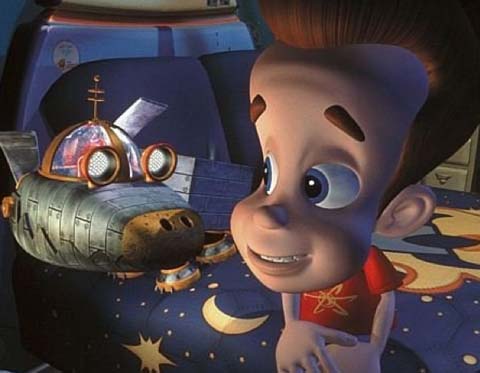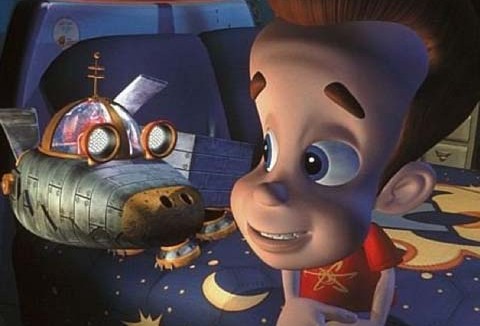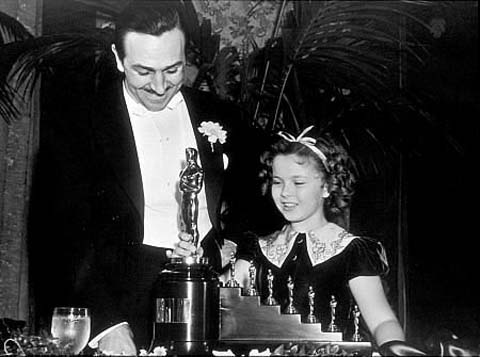

The 6 Most Unforgivable Animation Oscar Moments
Few people in the animation community take the Oscars seriously as a barometer for what is cutting-edge or innovative in animation, and looking at the long list of winners from years past, the awards have rarely reflected the development of animation as an art. Still, for one day every year, we pretend like the opinions of the Academy voters actually mean something to our community. That’s especially difficult during the years when the Academy’s choices have shown an even greater disconnect from animation than typical.
1. The Two Mouseketeers (1951) by Bill Hanna and Joe Barbera
Between 1943 and 1952, Bill Hanna and Joe Barbera won the Oscar for best animated short a remarkable seven times. Now you’re probably thinking, if the Academy deemed them worthy of recognition so many times, these guys must have been visionaries who were creating work that was truly different and interesting. And you’d be wrong. These guys made Tom and Jerry shorts, the most formulaic and workmanlike of any cartoon series produced during the Hollywood era of theatrical shorts.
Hanna and Barbera explored less and pushed fewer boundaries than any other directors during this period, and they were rewarded for playing it safe. In the year they won for Two Mousketeers–their innovation here was adding a second mouse–John Hubley created Rooty Toot Toot, which ranks among the most groundbreaking and beautiful pieces of animation ever produced within the Hollywood studio system. The Academy stopped tossing off Bill and Joe long enough to nominate Hubley’s masterwork, and then promptly awarded Hanna and Barbera their sixth Oscar.
2. Johann Mouse (1952) by Bill Hanna and Joe Barbera
The seventh(!) time that Bill Hanna and Joe Barbera won for Tom & Jerry. During the period Bill and Joe were winning their Oscars at MGM, their quiet colleague next door, Tex Avery, was actually revolutionizing the medium, pushing the content to its limits with some of the most violent, erotic and surreal shorts ever made in Hollywood, films that have had a profound and continuing influence on the medium today.
For all those dominant Bill and Joe years (1943-1952), poor Tex couldn’t even convince the MGM front office to enter his films into consideration. MGM and the Academy finally gave him a pity nomination in 1952 for Little Johnny Jet. However, none of Avery’s classics–including Red Hot Riding Hood, King Size Canary, The Cat That Hated People, Bad Luck Blackie, Little Rural Riding Hood, and Symphony in Slang–were ever recognized by the Academy. The final score at MGM: 13 nominations and 7 wins for Bill and Joe, 2 nominations and 0 wins for Tex.
3. The Crunch Bird (1971) by Ted Petok
A lame joke comprises the entirety of this two-minute film. But here’s the funniest part–when it’s time for audiences to experience the film’s sole gag, the screen goes black and the film ends!
Hey Academy, here’s another stupid joke:
The doctor told the patient, “You’re dying.”
The patient replied, “I want a second opinion.”
The doctor then said, “Okay, you’re ugly too.”
When can I have my Oscar?
4. The ChubbChubbs! (2002) by Eric Armstrong
Loud, ugly, and utterly pointless. It doesn’t help that the lead character has disgusting boils all over its body. The short has no point of view or reason for existing, but in the new century, Aretha Franklin’s “Respect” and an appearance by Jar Jar Binks are apparently enough to win over Academy voters.
5. The first year of the Best Animated Feature Category

For the remainder of eternity, people will look at the first time that the Academy chose to honor animated features, and they will see a nomination for a film called Jimmy Neutron: Boy Genius. I remember trying to watch this film when it first came out–inbetween bouts of dozing off–and even by 2001 standards, it has the appearance of being made in a yurt in the outer reaches of Mongolia by people who had never touched computers before. How else to explain the big dog turd that rests atop Jimmy Neutron’s head. On the upside, it makes that year’s winner, Shrek, look competently made by comparison.
6. Walt Disney’s Seven Dwarf Oscars

This image in a nutshell is why the Academy can’t ever be trusted to ever give animation its due as a serious art form. How did the Academy choose to honor Walt Disney after he created the first American feature-length animated feature, Snow White and the Seven Dwarfs, a marvel of technical bravado and visual beauty? By having a little girl present him with a bunch of miniature joke Oscars. Heaven forbid an award would be presented by an adult colleague with the mental capacity to explain why Disney’s trailblazing achievement was worthy of recognition.

.png)